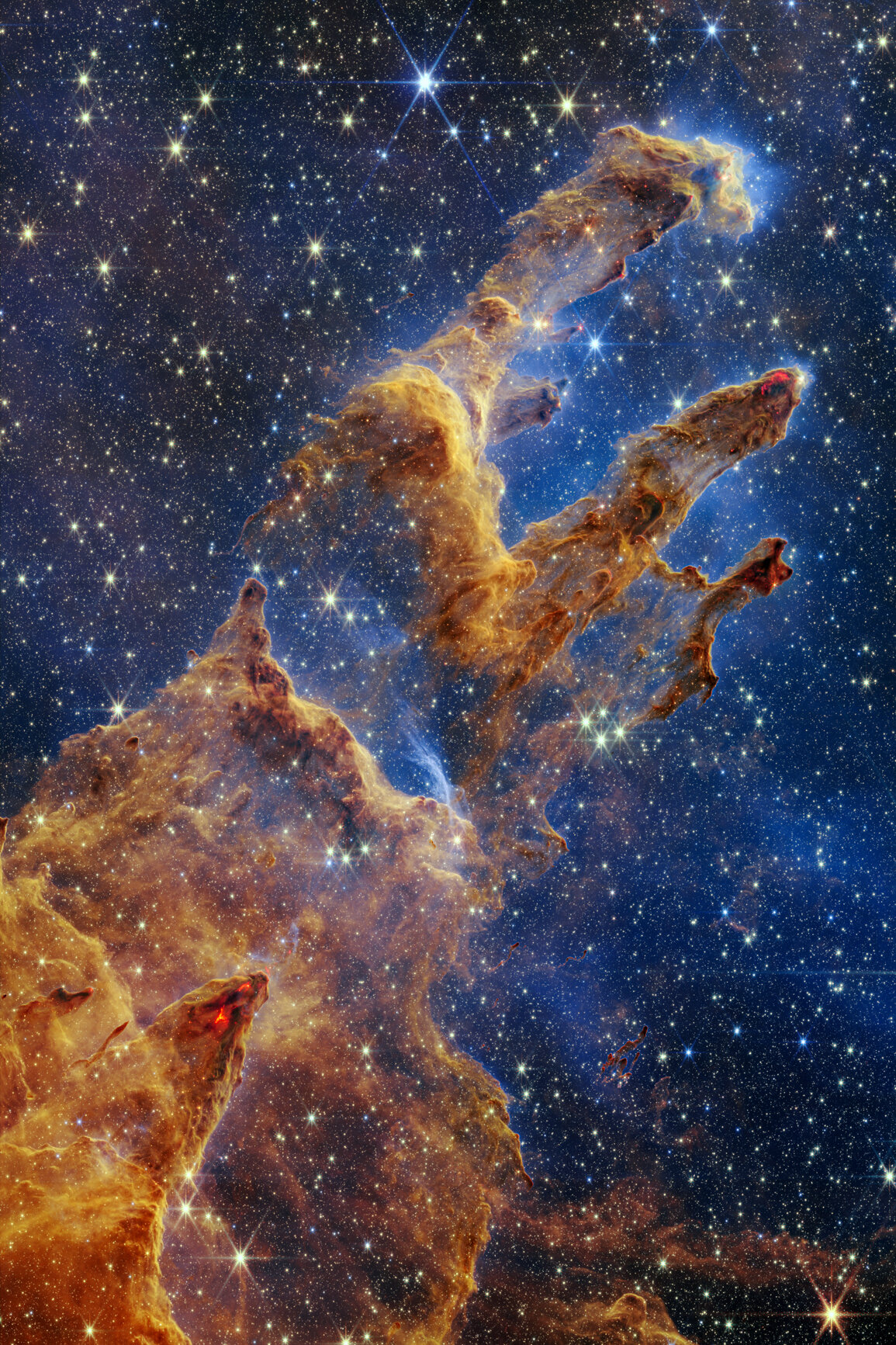The Near-Infrared Camera image shows stars taking shape amid clouds of hydrogen gas and dust

NASA’s James Webb Space Telescope has captured the formation of new stars amid hydrogen gas and dust clouds, dubbed the ‘Pillars of Creation’. The Pillars were first captured by the Hubble Space Telescope back in 1995. But the Webb Telescope is able to show stars created within the gaseous pillars.
The Near-Infrared Camera image of the Eagle Nebula region in the Serpens constellation – around 6,500 light-years from Earth – shows stars taking shape: ‘These are the bright red orbs that typically have diffraction spikes and lie outside one of the dusty pillars. When knots with sufficient mass form within the pillars of gas and dust, they begin to collapse under their own gravity, slowly heat up, and eventually form new stars,’ a NASA statement explained.
‘What about those wavy lines that look like lava at the edges of some pillars? These are ejections from stars that are still forming within the gas and dust. Young stars periodically shoot out supersonic jets that collide with clouds of material, like these thick pillars. This sometimes also results in bow shocks, which can form wavy patterns like a boat does as it moves through water. The crimson glow comes from the energetic hydrogen molecules that result from jets and shocks. This is evident in the second and third pillars from the top – the NIRCam image is practically pulsing with their activity. These young stars are estimated to be only a few hundred thousand years old.’
Astronomer-turned-novelist Pippa Goldschmidt wrote for ArtReview about the images taken by the Webb Telescope earlier this year, exploring how a process of subjective, aesthetic decisions has shaped the way we see deep space – harking back, for instance, to the aesthetic sublime of nineteenth-century paintings of the American West. ‘The images from Webb show the Universe not as we actually see it, but as we might hope to see it.’